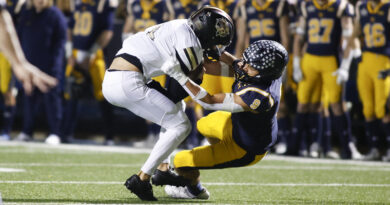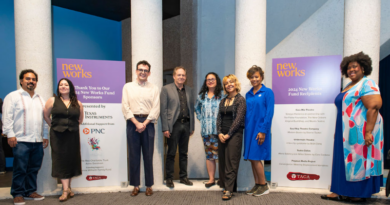Volunteers Help by Running With the Homeless
It may not seem like an immediate fit, but one organization is helping homeless individuals get jobs and housing – by first encouraging them to lace up their running shoes.
 Since 2007, the national nonprofit Back on My Feet has helped participants obtain more than 6,500 jobs and homes, logging in a collective 925,000 miles of running in 13 cities along the way.
Since 2007, the national nonprofit Back on My Feet has helped participants obtain more than 6,500 jobs and homes, logging in a collective 925,000 miles of running in 13 cities along the way.
But how does running translate to jobs and homes?
“We use running and community support and community engagement to help our members move towards independence and make their way out of shelters, essentially,” explained Emily Johnson, a program manager with the Dallas chapter. “Our primary focus is employment. A lot of people know Back on My Feet for our running and our races and things like that, but we definitely have a very strong emphasis on the workforce development side of things with our members.”
Johnson said that members run three mornings a week, and if they’ve maintained a 90 percent attendance rate, at the 30-day mark, they can qualify for workforce training.
“We really use that to kind of help instill discipline and then just remotivate them, help them clear their minds through their running, and just create a new vision for themselves and for their future,” Johnson said. “And then as long as they’re active in our program, they’re maintaining that attendance, and they’re engaging with us, we move them into what’s called our Next Steps program.”
The Next Steps program is designed to help homeless individuals become more independent. Accenture has partnered with Back on My Feet to provide job readiness classes, and ACE Cash Express offers financial literacy classes.
“We really use that to kind of help instill discipline and then just remotivate them, help them clear their minds through their running, and just create a new vision for themselves and for their future.” — Emily Johnson

And while members are picking up practical skills, they’re still running three days a week, with volunteers who run, walk, and power walk alongside.
“We’re combining the best of the health and wellness world with the workforce world,” Johnson said. “It’s really a unique approach because it also helps restore their confidence, their self-esteem, and it just gives them a lot more confidence to be able to tackle the barriers that they need to, knowing that they have the community support to back them in that way.”
Anyone 18 and older can run with the groups. The Dallas chapter has three that meet at Dallas LIFE, the Salvation Army Carr P. Collins Social Center, and the Salvation Army Recovery Center – and Johnson said they like their volunteer runners to commit to one morning a week.
And the pace of the runs, Johnson said, makes it an excellent option for someone who wants to be more active, but doesn’t want to run a marathon, either.
“We definitely tell all of our volunteers like this is not going to be your marathon training,” she said. “We have power walkers; we have joggers; we have guys that can leave you in the dust and take off flying. But we definitely have a wide range of abilities.”









